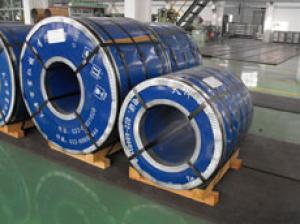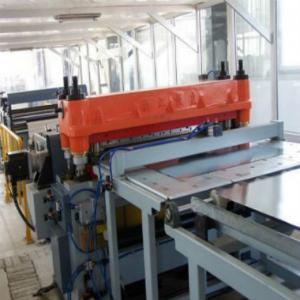Electrolytic Tinplate Sheets for 0.30 Thickness MR Sheets
- Loading Port:
- Tianjin
- Payment Terms:
- TT or LC
- Min Order Qty:
- 25 m.t.
- Supply Capability:
- 8000 m.t./month
OKorder Service Pledge
OKorder Financial Service
You Might Also Like
1.Structure of Electrolytic Tinplate Sheets for 0.30 Thickness MR Sheets Description
Electrolytic Tinplate Sheets is one of the metal packing materials, which is widely used for making painting cans ,chemical package cans , electrical cable ,battery and metal printing etc.
2. Main Features of Electrolytic Tinplate Sheets for 0.30 Thickness MR Sheets
Steady and high quality
Fast shipment
Good experience for export work
For the surface, Plate uniform in thickness,uniform and smooth tin coating, without flaws,rusts,scratch,wave,nick of tin coating etc.
Price competitive
3.Electrolytic Tinplate Sheets for 0.30 Thickness MR Sheets Images

4. Electrolytic Tinplate Sheets for 0.30 Thickness MR Sheets Specification
Standard : GB2520-2000 ,JIS G3303
Steel type : SPCC,MR
Coating : 2.8/2.8
Surface: Bright, Stone ,
Thickness:0.31
Width :600MM~1000MM
Temper : T1~T5
Package: tinplate wrapped completely with an inner cover of plastic or waterproof papers with vorners protected with metal angels.
5.FAQ of Electrolytic Tinplate Sheets for 0.31 Thickness MR Sheets
A. What is the package of tinplate? (Referred as below)
For sheets, thin plastic film + rust-proof paper + metallic cover + metallic angles+ steel band strips + fumigated wooden pallet.
For coil, thin plastic film + rust proof paper + metallic cover + steel band strips + fumigated wooden pallet
B. The surface of tinplate could you supply?
Stone finish, Bright finish, Matte finish, Silver finish
C. What quantity is the minimum order of tinplate?
Usually, the minimum quantity is 25MT. For special case, consult with us.
D. Can it make to be BA or CA for annealing?
Yes, both can do with.
- Q: What are the different ways to recycle tinplate containers?
- There are several ways to recycle tinplate containers. One way is to separate the tinplate from other materials, such as plastic or paper, and then melt it down to be reused for manufacturing new tinplate products. Another method involves crushing the containers to reduce their size, which makes it easier to transport and process them at recycling facilities. Additionally, tinplate containers can be repurposed for various uses, such as storage or organization, before eventually being recycled.
- Q: How does tinplate handle exposure to different atmospheric conditions?
- Tinplate generally handles exposure to different atmospheric conditions quite well. Its corrosion resistance, thanks to the tin coating, helps protect the underlying steel from rusting and other forms of degradation. However, extreme conditions such as high humidity, acidic environments, or prolonged exposure to saltwater may still pose some risk. In such cases, additional protective measures like coatings or proper maintenance are recommended to ensure the tinplate's longevity.
- Q: Can tinplate be used for renewable energy applications?
- Yes, tinplate can be used for renewable energy applications. It is commonly used for manufacturing solar panels and wind turbines due to its high durability, corrosion resistance, and electrical conductivity properties. Tinplate is also recyclable, making it an environmentally friendly choice for renewable energy projects.
- Q: Can tinplate be used for toys and games?
- Yes, tinplate can be used for toys and games. Tinplate is a lightweight and durable material that can be easily shaped and decorated. It is commonly used to make toy cars, trains, tin soldiers, and various other playthings.
- Q: What are the different tinplate surface finishes?
- There are several different tinplate surface finishes available, including bright finish, stone finish, matte finish, and lacquered finish. These finishes offer various levels of shine and texture, allowing for different aesthetic and functional purposes in the tinplate industry.
- Q: Is tinplate safe for contact with skin?
- Yes, tinplate is generally safe for contact with the skin. Tin is non-toxic and does not react with skin or cause any known skin allergies or irritations. However, if the tinplate has sharp or rough edges, it may cause minor cuts or abrasions. It is always important to ensure that tinplate objects are free from any sharp edges or rough surfaces before using them in direct contact with the skin.
- Q: What are the advantages of using tinplate for household appliances?
- There are several advantages of using tinplate for household appliances. Firstly, tinplate provides excellent corrosion resistance, which helps to protect appliances from rusting and prolongs their lifespan. Secondly, tinplate is lightweight yet strong, allowing for easy handling and transportation of appliances. Additionally, tinplate has a smooth and glossy surface, making it aesthetically pleasing and easy to clean. Lastly, tinplate is a sustainable and recyclable material, promoting environmental sustainability in the production and disposal of household appliances.
- Q: Can tinplate be used for gift packaging?
- Yes, tinplate can be used for gift packaging. It is a versatile material that offers durability and aesthetic appeal, making it suitable for creating attractive and protective packaging for various gift items.
- Q: What are the main factors influencing the growth of the tinplate market?
- The main factors influencing the growth of the tinplate market include increasing demand for packaged food and beverages, the growth of the automotive industry, rising consumer awareness about sustainable packaging, and advancements in tinplate manufacturing technologies. Additionally, factors such as changing lifestyles, urbanization, and the need for lightweight and durable packaging solutions are also driving the growth of the tinplate market.
- Q: How is tinplate cut and shaped for different packaging designs?
- Tinplate is cut and shaped for different packaging designs through a variety of methods, including cutting, stamping, and forming. Cutting processes such as shearing or blanking are used to separate the tinplate into desired shapes. Stamping involves using a die to press the tinplate into specific forms, while forming techniques like deep drawing or bending result in more complex shapes. These methods allow for the customization of tinplate packaging designs to cater to various product requirements and aesthetic preferences.
Send your message to us
Electrolytic Tinplate Sheets for 0.30 Thickness MR Sheets
- Loading Port:
- Tianjin
- Payment Terms:
- TT or LC
- Min Order Qty:
- 25 m.t.
- Supply Capability:
- 8000 m.t./month
OKorder Service Pledge
OKorder Financial Service
Similar products
Hot products
Hot Searches
Related keywords



























